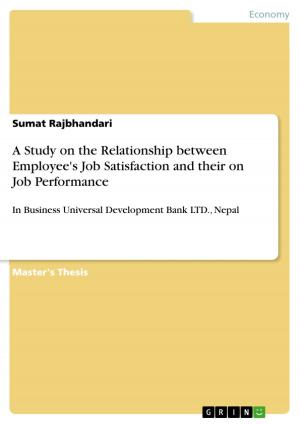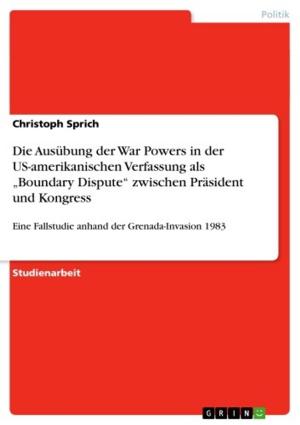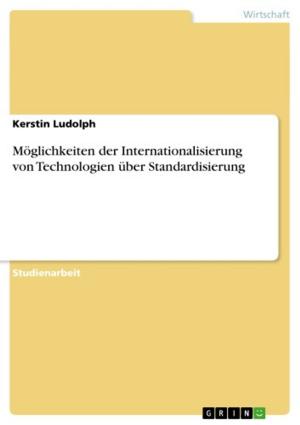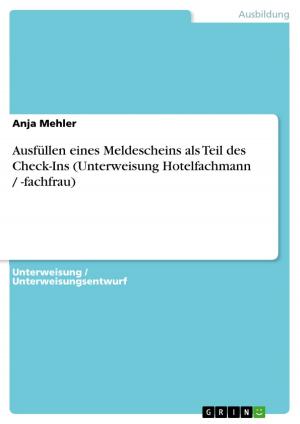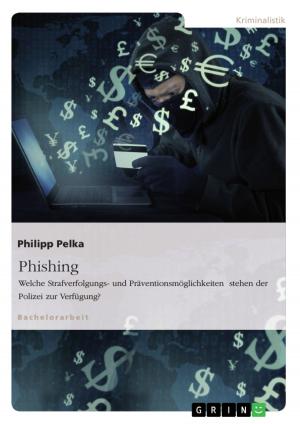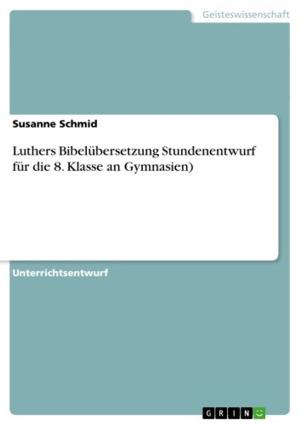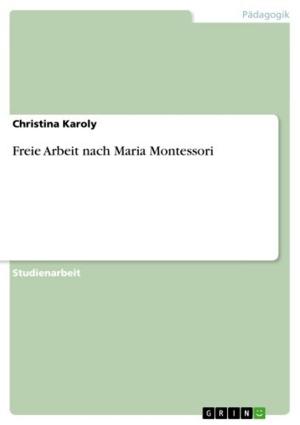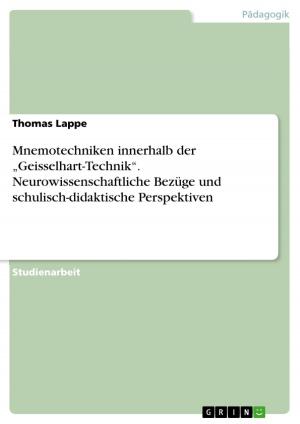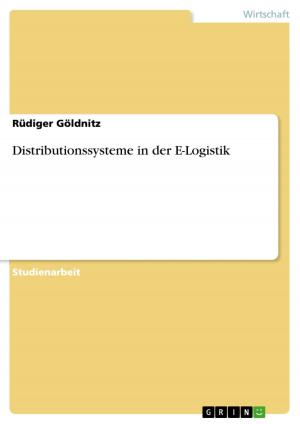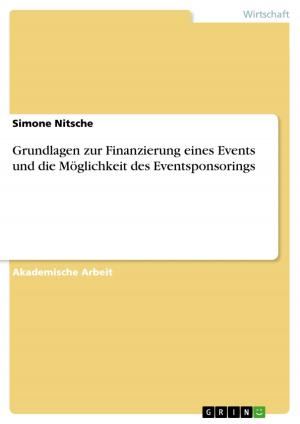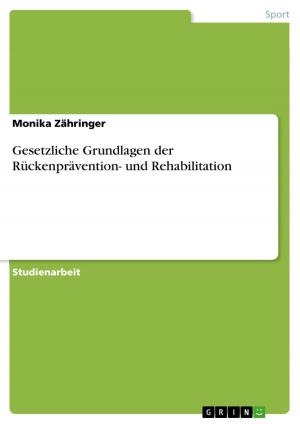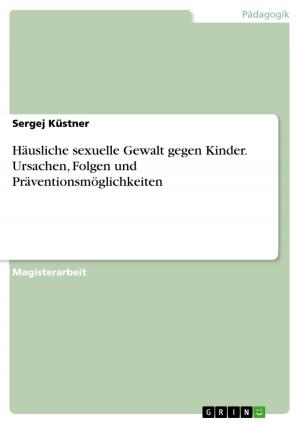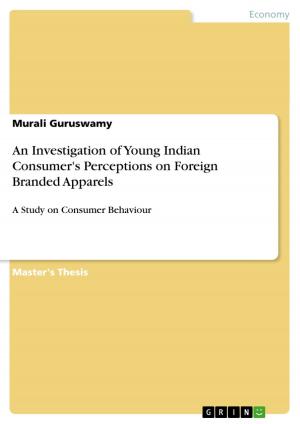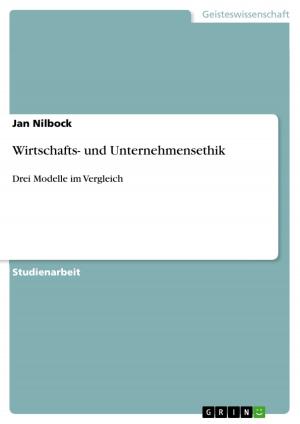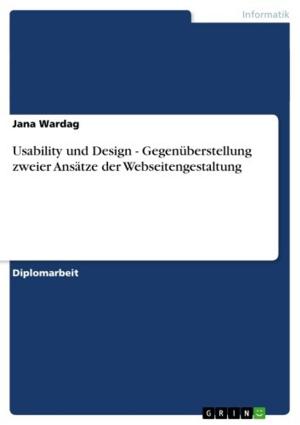Fantasy Literature for Children and Young Adults
Fiction & Literature, Literary Theory & Criticism, British| Author: | Evelyn Schmitz | ISBN: | 9783638018920 |
| Publisher: | GRIN Verlag | Publication: | March 6, 2008 |
| Imprint: | GRIN Verlag | Language: | English |
| Author: | Evelyn Schmitz |
| ISBN: | 9783638018920 |
| Publisher: | GRIN Verlag |
| Publication: | March 6, 2008 |
| Imprint: | GRIN Verlag |
| Language: | English |
Seminar paper from the year 2007 in the subject English Language and Literature Studies - Literature, grade: 1,0, University of Frankfurt (Main) (IEAS), course: Hauptseminar HS Book Bites - From Alice in Wonderland to Harry Potter, 24 entries in the bibliography, language: English, abstract: 1.Introduction This paper presents the fields of Children's and Young Adult Literature , Fantasy Literature and both fields in context. It will firstly discuss different approaches to these fields and specify them with a description of their historical developments - especially in Great Britain, the US and Germany. The focus will lie on a specific literary piece of work - the 'Harry Potter' series, containing 7 volumes, written by Joanne K. Rowling, and firstly published originally in England in 1997. This series shall be applied to the theoretical background of fantastic ChL and YAL, so that motifs, figures, narrating techniques, and intentions are considered. The paper will conclude with a justification about what 'Harry Potter' really is in a literary sense: A work of fantastic ChL and YAL. 2.What are 'Children's Literature' and 'Young Adult Literature'? 2.1Definitions Both terms 'Children's Literature' and 'Young Adult Literature' are ambiguous and thus not very easy to define. For instance, one may ask, whether ChL is written by children, read by children, written about children, written about what interests children, or written for children. One might generally answer that the notion of 'Children's Literature' includes a bit of everything (except the first aspect because children usually do not write literature). Hunt (1996: 17) also refers to these controversies when attempting to define the term. Firstly, he puts it in rather general words: 'it is a category of books the existence of which absolutely depends on supposed relationships with a particular reading audience: children.' This statement defines the target group of ChL what means that Hunt sees it as literature which is read by children. However, this definition does not clarify the notion regarding the characteristics of its field. Many critiques say that the term includes 'books which are good for children and most particularly good in terms of emotional and moral values' (Hunt, 1996: 17). But what are emotionally and morally good values, and who decides what they are? This leads to the question, whether ChL is specifically written for children. In this case, authors of such literature decide what is good as well as the parents or teachers who decide to let children read it.
Seminar paper from the year 2007 in the subject English Language and Literature Studies - Literature, grade: 1,0, University of Frankfurt (Main) (IEAS), course: Hauptseminar HS Book Bites - From Alice in Wonderland to Harry Potter, 24 entries in the bibliography, language: English, abstract: 1.Introduction This paper presents the fields of Children's and Young Adult Literature , Fantasy Literature and both fields in context. It will firstly discuss different approaches to these fields and specify them with a description of their historical developments - especially in Great Britain, the US and Germany. The focus will lie on a specific literary piece of work - the 'Harry Potter' series, containing 7 volumes, written by Joanne K. Rowling, and firstly published originally in England in 1997. This series shall be applied to the theoretical background of fantastic ChL and YAL, so that motifs, figures, narrating techniques, and intentions are considered. The paper will conclude with a justification about what 'Harry Potter' really is in a literary sense: A work of fantastic ChL and YAL. 2.What are 'Children's Literature' and 'Young Adult Literature'? 2.1Definitions Both terms 'Children's Literature' and 'Young Adult Literature' are ambiguous and thus not very easy to define. For instance, one may ask, whether ChL is written by children, read by children, written about children, written about what interests children, or written for children. One might generally answer that the notion of 'Children's Literature' includes a bit of everything (except the first aspect because children usually do not write literature). Hunt (1996: 17) also refers to these controversies when attempting to define the term. Firstly, he puts it in rather general words: 'it is a category of books the existence of which absolutely depends on supposed relationships with a particular reading audience: children.' This statement defines the target group of ChL what means that Hunt sees it as literature which is read by children. However, this definition does not clarify the notion regarding the characteristics of its field. Many critiques say that the term includes 'books which are good for children and most particularly good in terms of emotional and moral values' (Hunt, 1996: 17). But what are emotionally and morally good values, and who decides what they are? This leads to the question, whether ChL is specifically written for children. In this case, authors of such literature decide what is good as well as the parents or teachers who decide to let children read it.

